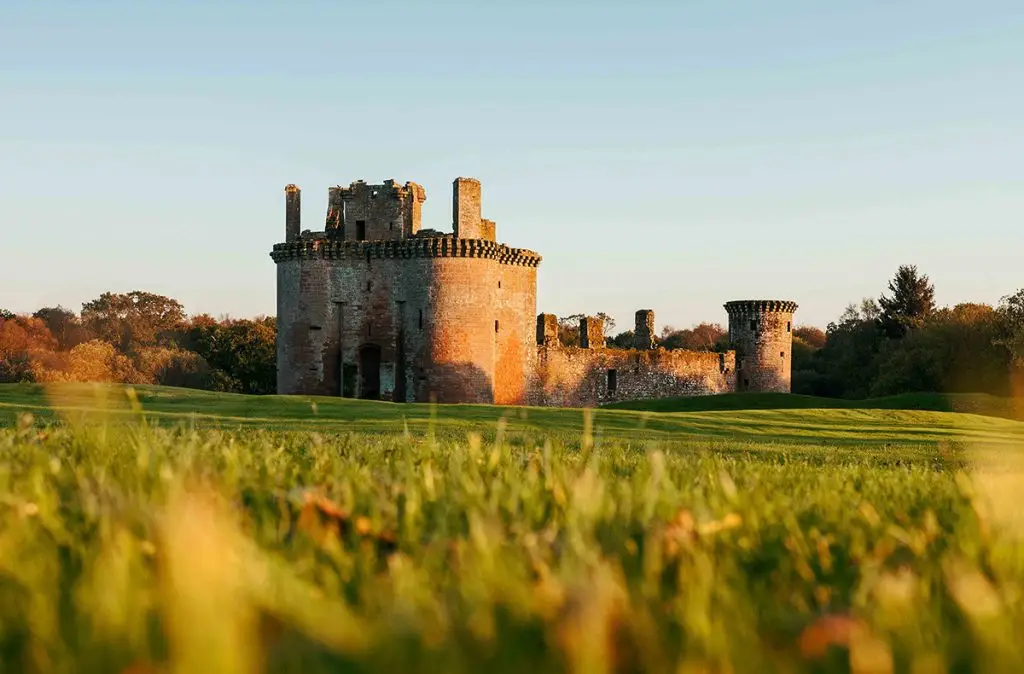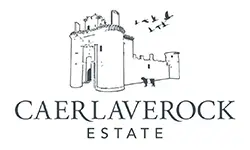
Caerlaverock Estate is privately owned and has remained within the same family line for over 800 years, from Maxwell to Herries. Lady Clare Kerr, heir to the title Lady Herries of Terregles (created in the Peerage of Scotland in 1490) took over the running of the Estate in 2017.
The Estate devolved from the 16th Duke of Norfolk, Lady Clare’s grandfather, from his mother Gwendolen Constable Maxwell, the 12th Lady Herries of Terregles. The Herries title, as ‘male preference’, passes to the eldest daughter in the absence of a son. There have been five Lady Herries of Terregles to date, the first (Agnes) in the 16th century.
The remarkable continuity of ownership began in 1220 when King Alexander II of Scotland granted the lands of Caerlaverock to Sir John de Maccuswell (Maxwell), making him Warden of the West March and Chamberlain of Scotland. The Maxwells’ association with Caerlaverock spans over four centuries of turbulent Scottish history, during which the family served as guardians of Scotland’s southwestern approach against English incursions. The castle witnessed some of the most dramatic episodes of the Wars of Scottish Independence, including the famous siege of 1300 by Edward I of England, commemorated in the medieval French poem ‘Le Siege de Kalavreock’, when just 60 Maxwell defenders held out against an army of 87 knights and 3,000 men before their eventual surrender.
The transition from Maxwell to Herries ownership occurred through marriage in 1549 when Lady Agnes Herries, daughter and heiress of the 3rd Lord Herries, married Sir John Maxwell, creating the unique dual legacy that continues today. This union brought together two of Scotland’s most influential border families, with the Herries title created in 1490 for Herbert Herries of Terregles. Throughout the 16th and 17th centuries, the Maxwell-Herries lineage remained steadfast supporters of Mary, Queen of Scots, providing her refuge at Terregles Castle in 1568 during her flight from Scotland. The family’s Catholic faith and loyalty to the Stewart cause culminated in the 1640 siege that finally ended Caerlaverock’s role as an active fortress, when Robert Maxwell, 1st Earl of Nithsdale, withstood a 13-week siege by the Protestant Covenanters before the castle’s partial demolition ensured it could never again serve as a place of defence.
After a devastating fire at Caerlaverock Tea Room & Shop in 2016, Lady Clare brought The Boathouse Glencaple to life, an award-winning bistro style restaurant and shop on the quayside in the village of Glencaple. Following this, she launched the Estate’s new holiday accommodation – Erriff, overlooking the River Nith on Shore Road, Glencaple and a two minute walk from The Boathouse, and two luxury eco cabins (The Curve and The Treehouse) with wood-fired hot tubs and stunning views of the Solway Estuary.
Over several generations, the Estate has focused on community, environmental stewardship, heritage and culture. Lady Clare, like her grandfather and aunt before her, is committed to ensuring that these continue to be the core values of the Estate.
